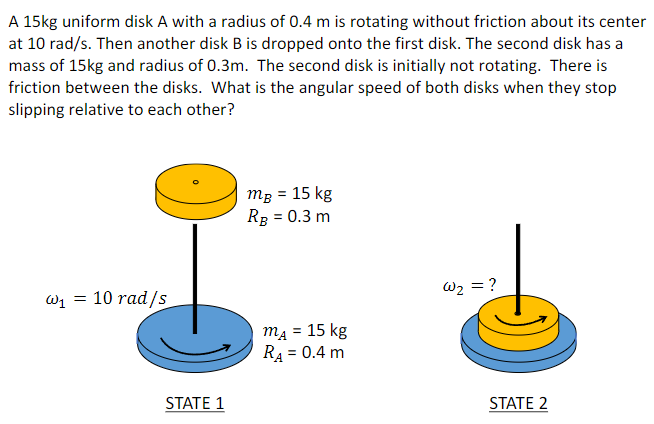A 15 kg uniform disk A with a radius of 0.4 m is rotating without friction about its center at 10 rad/s. Then another disk B is dropped onto the first disk. The second disk has a mass of 15 kg and radius of 0.3 m. The second disk is initially not rotating. There is friction between the disks. What is the angular speed of both disks when they stop slipping relative to each other? STATE 1 STATE 2
